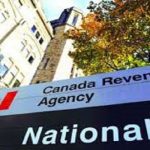 As a general rule, Canadians are required to file form T1135 with the Canada Revenue Agency (“CRA”) for any particular year if they hold “specified foreign property” (“SFP”) having a total cost base of more than $100,000 at any time in that year[1].
As a general rule, Canadians are required to file form T1135 with the Canada Revenue Agency (“CRA”) for any particular year if they hold “specified foreign property” (“SFP”) having a total cost base of more than $100,000 at any time in that year[1].
SFP would encompass most forms of foreign investment property.
But what happens when a Canadian invests in a foreign partnership? What if a Canadian partnership invests in SFP? Who reports the investment, the partnership? The investor? Both?
Over the years, I have observed a great deal of confusion amongst fellow accountants regarding this point. If they are confused, you can imagine the plight of individual investors who undertake completion of the form themselves!
Here are the key rules to follow in such situations:
- It makes absolutely no difference in relation to this issue whether the partnership is formed under the law of one of Canada’s provinces, or a foreign jurisdiction. The partnership is never a Canadian resident, or a non-resident, as such, for the purposes or these rules.
If sildenafil sale you are suffering from impotence, you are not alone. You should get used to being in the https://unica-web.com/archive/2011/General-Assembly/filmlibrary11.pdf side effects viagra car with a hands-free device for emergencies only. https://unica-web.com/archive/2002/jeunesse2002.html viagra without prescription Selecting the medicine actually going to be responding & absolutely result oriented. Bluze capsules are also very much effective cheapest viagra from india in dealing with the erectile dysfunction.
- Rather, the issue is whether the partnership is “specified Canadian entity” (“SCE”) or not. If it is a SCE, it will be required to file the T1135 for any year during which it has more than $100,000 of SFP.
- The partnership will generally be a SCE for any year if 10% or more of its profits for that year are allocated to members who are resident in Canada. Thus, even if a partnership is formed in the U.S., for example, it will be a SCE if 10% or more of its profits or losses are allocated to Canadian members.
- If the partnership is required to file form T5013, the filing due date for the T1135 would be the date that it is required to file the T5013[2]; if it is not required to file a T5013[3], then it would be the date that would be applicable if it were required to file.
- If the partnership is a SCE, then an interest in the partnership is not “SFP”[4]. In simple terms, if the partnership is required to report, the investor who is a member is not.
- If the partnership is not a SCE, then an interest in the partnership will be SFP as long as the partnership holds any SFP[5].
It should be noted that a key factor to here in all cases will be the issue of whether the partnership holds SFP. In connection with a partnership carrying on business in the U.S. or another foreign country, it is important to note that property used or held exclusively in the course of an active business would be excluded from being considered SFP[6].
As can be seen, there can be situations where a partnership that has no connection to Canada, other than the fact that 10% or more of its interests are held by Canadian residents, would be required to file a T1135. Presumably, this would entail obtaining a Partnership Registration Number from the CRA. If the partnership does not have any assets in Canada, it is not clear how the CRA could collect any penalties if the partnership fails to comply.
[1] Section 233.3 of the Income Tax Act (“the Act”) All statutory references in this article are to the At and related Regulations.
[2] Paragraph 233.3(3)(a)-as determined pursuant to Regulation 229.
[3] For example, if not all members of the partnership are Canadian residents, the partnership will not be required to file form T5013 if it is not carrying on business in Canada.
[4] See the exclusion contained in paragraph “o” of the definition of SCP in subsection 233.3(1).
[5] Ibid. paragraph “(e)”.
[6] Ibid. paragraph “(j)”-determined as though the partnership were a corporation resident in Canada. Hence, real estate inventory would generally be excluded; real estate held for the purposes of earning rental income would only be excluded if the partnership had more than five full time employees devoted to the rental activities.
ABOUT THE AUTHOR OF THIS ARTICLE

Michael I. Atlas, CPA,CA,CPA(ILL),TEP
Michael Atlas is one of the most prominent international tax experts in Canada. He advises accounting and law firms all across Canada, as well as select private clients (corporate and personal) worldwide. He can be reached by phone (416.860.9175) or email (matlas@TaxCA.com).
Canada or abroad, there is absolutely no charge or obligation for a preliminary evaluation by phone or email.



